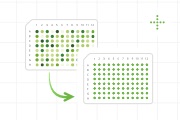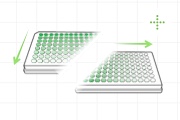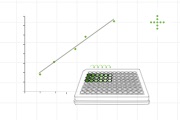General liquid handling
Name
Published by

This example method provides a freely adjustable framework for measuring the adaptability of the OneLab environment to workflows from different application fields. It helps to understand various nuances of the code-free, universal protocol designer and provides general indications as to the feasibility of a project. Scripts generally require fine adjustment to correct for variables and support specific labware implementation.
The repetitive pipetting to or from wells during a plate reformatting procedure could introduce errors and variability, which is detrimental to the reliability of experimental results.
Using OneLab software, Andrew Alliance automation solutions provide the best performance in time and precision, thereby making plate reformatting less time-consuming and more accurate.

This example method provides a freely adjustable framework for measuring the adaptability of the OneLab environment to workflows from different application fields. It helps to understand various nuances of the code-free, universal protocol designer and provides general indications as to the feasibility of a project. Scripts generally require fine adjustment to correct for variables and support specific labware implementation.
Workflows like ELISA assays, protein content determination and quantitative LC-MS analysis rely on serial dilutions to prepare calibration curves and quality control samples.
This series of methods demonstrates simple 2- and 5-fold serial dilutions in 96-well plates in a row or column-wise fashion. The same script can be executed in a fully automated manner using Andrew+ or guided using Pipette+.

This basic method provides the core methodology for translating a workflow into OneLab-executable script(s) as an attempt to fully or semi-automate a specific procedure. It demonstrates the benefits of automation and highlights OneLab capabilities and best practices to promote solution adoption, helping transition from manual to a more automated approach. It can be used alone or serves as a building block for a more complex workflow and is easily adaptable to users' requirements.
LC-MS analytical method development requires flexible and reproducible sample preparation for accurate and robust analyte quantification.
This method provides example protocols of automated sample preparation for standard curve generation, using the Andrew+ Pipetting Robot with cloud-native OneLab software, ensuring downstream accurate and reproducible LC-MS quantification of different analytes.
